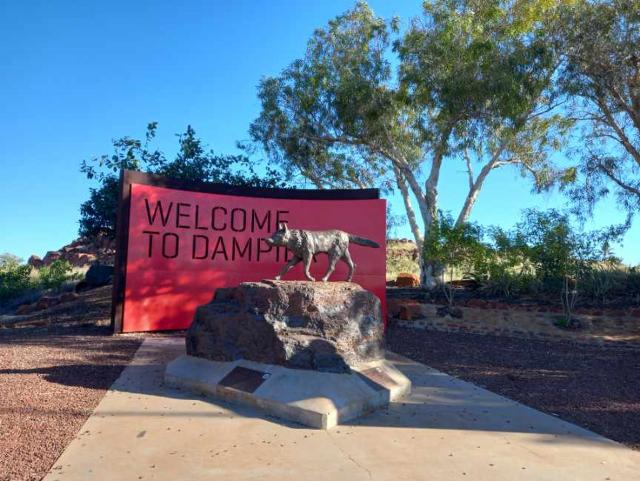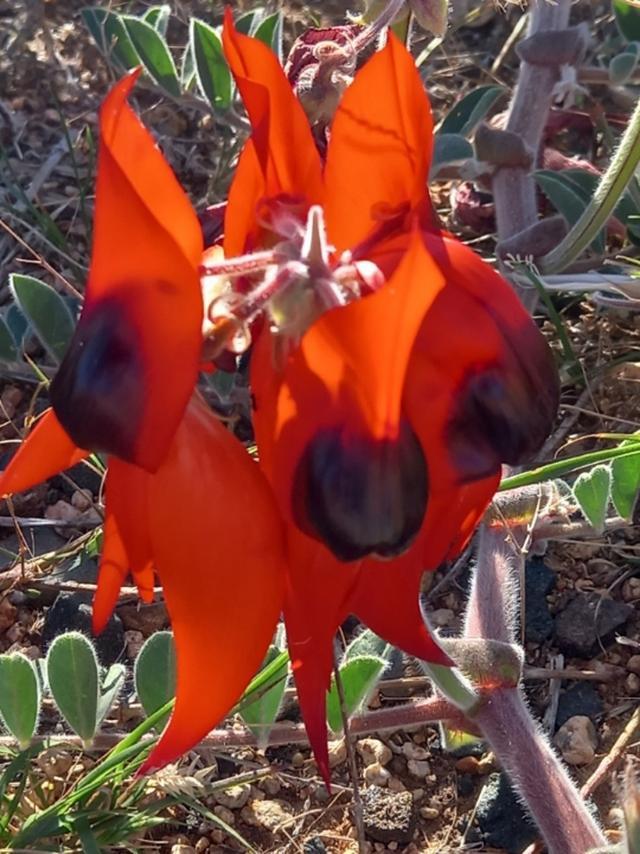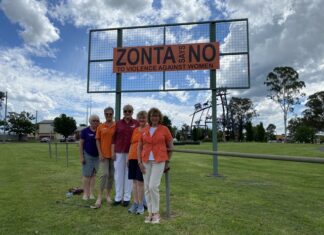While I was in WA I was fortunate to fly north to Karratha with my daughter and enjoy some time sightseeing while she ran a coaching clinic for the local swim club.
In this area distance seems irrelevant as there were swimmers at a special weekend swim clinic who had driven eight hours to attend and faced another eight hour trip home. That’s true dedication on the part of the swimmers and their parents.
Before I went to WA this time I hoped I would be able to see the beautiful desert peas in bloom and maybe the wreath flower as well. My dream came true with the trip to Karratha as the roadsides and bush areas produced a great display of the desert pea for me, but the wreath flowers will have to be another time.
I’m afraid I’m a typical tourist when I am over there as I am just astounded by the spectacular scenery and vegetation and I’m always having my family pull over so I can take pictures. But then again, I guess I’m not that different when I travel in the eastern states. I just love the beauty and variety of our native plants all over the many areas I have visited, whether it’s the coast or inland.
Flying over the country north from Perth was fascinating as the colour of the soil changed to various shades of red. I had a window seat and loved seeing the patterns of the watercourses and hills and the roads that stood out because there were so few. There were no towns visible below us after a very short while in the air. It really is a sparsely populated state once you leave the coastal areas around Perth and head north.
As we drove from the airport into town the roadsides and any ground that had been recently disturbed was covered in desert pea flowers due to the recent rain in the area. I had never seen them growing wild and they are more spectacular than any photo can show.
We drove out to the port of Dampier, saw the statue and history of the “Red Dog” of movie fame and along the road there was an unusual white flowered plant that google identified for me as snow bush or kapok bush, “aerva javanica”. The second name makes sense to me as I remember kapok mattresses and their filling is just what the white “blossoms” resemble. It appeared in this area to only grow about 60cm high and wide and was covered in “flowers” that were more like cotton wool or kapok wound around the stems. So unusual and seen enmasse, so beautiful..something that would look great as a filler flower in an arrangement. I don’t know how well they would last as a cut flower or if they are easily grown commercially but they are certainly different.
Another beauty that took my eye was the spikes of mauvey pink, “pilotus exaltatus” commonly known as pink mulla mulla. It grows over most arid and semi arid areas of Australia with the exception of the Nullabor Plain, that was also prolific on roadsides. Karratha has many art installations on roundabouts in the town and these flowers were depicted on one we used many times. They looked terrific in the daytime and even better at night as they lit up.
I assume the lack of water in this area limits the growth of trees as the only ones I saw were in depressions where water would collect and these were not more than about five metres high. I found that they are botanically “corymbia aparrerinja” but known locally and aptly as ghost gum. The paddocks
were devoid of trees but covered in spinifex and I actually did see some cattle grazing. Some type of small boab trees were also growing in some areas.
Numerous small shrubby grevilleas, mellalucas and wattles dotted the areas. I was just fascinated and wish I could better describe what I saw and more importantly the feelings I had being part of this amazing landscape.
Around Karratha there are huge piles and lines of red rocks that look as if they have been all pushed up with heavy machinery. This is not the case however, even though they are in a mining area. They have been like that for thousands of years and generally run directly north south with the compass.
We also drove out to Cossack and saw the remnants of the town that was established as a pearling outpost in the 1800’s. Beautiful stone buildings. As the area is devoid of trees that would usually have been the building material, the few buildings remaining were all substantial and stone. It is a tourist area for fishing now. Roeburne and Wickham are the other two dots on the map in this area.








